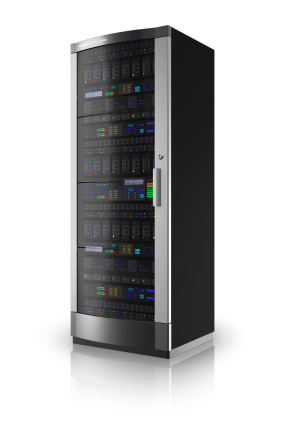The Genie in the Phone Cloud: Top 5 Small Biz Features
Entrepreneurship is at an all-time high and innovative small businesses are sprouting and flourishing. Personal service, attention to detail, and feeling good about supporting local and sustainable companies are some of the most popular reasons people choose the little guy over big, aggressive brands.
Maybe you sell delectable gluten-free scones out of a food truck, or are a general housing contractor with a small team of employees. Being great at your trade is one thing, but there’s also the matter of managing communications and connecting smoothly with your customers. With a cloud-based phone system from RingCentral, small businesses are able to walk (and talk) in big business shoes. You can become the wizard behind the curtain, orchestrating spectacular feats with ingenuity and some smart technology.
The Auto-Receptionist is always in and on
Your Auto-Receptionist is the personal assistant that never calls in sick! You or your administrator set the parameters so you can be reached anytime and everyplace. Define the routing criteria, and you’re connected to customers, vendors, and your cycling group, with calls forwarded to multiple numbers and devices, text-to-speech translation of messages, and department-specific messaging. Want someone with a crisp English accent orating your menus for callers? Greetings are customizable, and you can even source professional talent for your recordings. Your three-person organization can perform with the finesse and functionality of a traditionally larger and more established operation.
Unlimited Toll-Free, Local, and Vanity Numbers
Your phone number says a lot about you. Literally it could spell out a memorable word or two. A standard toll-free number, including the classic 1-800 number, tells your customers you’re well established and ensures that your customers can reach you at no cost to themselves. Choose a few local numbers for areas you want to service and instantly become a hot, new, neighborhood business.
Yes, that’s my Department
Getting dumped into a general voicemail box or simply not being able to reach someone in a timely manner is alienating for callers and can send potential customers searching for a more responsive and better-prepared business. Instead, create virtual departments with a group of extensions as a fantastic way to add real structure to your business and make it easy for your contacts to connect with you. For example, create the ‘Sales’ department and when the designated reps aren’t available, the system puts callers on hold until someone can take the call. Hold times can be customized as well, so your callers never feel lost or unimportant.
Get ahead with Call Forwarding
So what happened to the caller on hold for sales? Realizing every second counts and all’s fair in love and brand loyalty, you set Call Forwarding to reach you or another contact after, say, a 30-second hold time. The call instantly goes to your business partner’s mobile phone. If they’re also not available, the call finds the next contact and, as a last resort, it routes to the extension at your poolside cabana in Orlando. You can set specific parameters for After Hours as well and avoid the cost (and antiquated style) of an outside answering service.
The thrill of the (easy) chase
You want your business to be pursued and easily caught. FindMe-FollowMe is the cyber stalker you’re glad to have on your side. You control connectivity by directing incoming calls to any and all your phones, whenever you want. You can even set it to call multiple phones simultaneously, in a specific order and even by date, time, the caller’s Caller ID, or the number dialed.
You had the vision and grit to launch your business, and the progressive thinking to ditch the room full of obsolete and costly phone system hardware. Your contacts will be amazed at how you always seem to magically appear when they need you. Building a successful business starts with the basic steps like establishing a phone system, and being easily reachable by customers whenever they need to reach you.
To View Full Article Click Here








